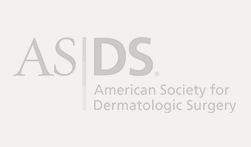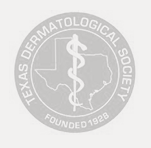How to Make Dermal Fillers Last
Dermal fillers are easy fixes for a variety of skin and appearance issues. Dermal fillers work magic in the right hands, and this magic extends beyond our reflections. In fact, many studies show that looking good has a profound effect on how we feel and how we are perceived by others (read about the Halo Effect).
Sadly, not only are most fillers temporary, but also, skin aging issues accelerate as we get older.
So, how do we make the magic last?
Let’s start by discussing the different types of fillers: hyaluronic acid or HA (Juvederm and Restylane families of fillers), polymethylmethacrylate or PMMA with collagen (Bellafill), and Poly-L-lactic acid (Sculptra).
HYALURONIC ACID (HA) FILLERS
On the menu of dermal fillers, hyaluronic acid fillers are the most commonly used. The most popular HA fillers with strong safety profiles are Juvederm and Restylane. The Juvederm family of fillers includes Juvederm Ultra, Ultra Plus, Volbella, Vollure, and Voluma. Restylane family of fillers includes Restylane, Silk, Defyne, Refyne, and Restylane Lyft.
HA is a naturally occurring substance or polymer in our bodies. As we age, we lose our supply of HA, taking with it our skin plumpness (like a grape deflating into a raisin).
HA fillers can replace volume loss in our skin, our diminishing facial fat pads and our shrinking facial bone mass. Further, HA fillers give us a means to non-surgically correct facial balance and create better facial proportions than, perhaps, we genetically were gifted.
You may be wondering why there are so many different kinds of HA fillers. The answer involves product density or viscosity.
For example, dense or robust fillers offering volume and projection are preferred in areas requiring “heavy” lifting or sculpting. These areas include cheeks, cheekbones, temples and jawline. Dense dermal fillers such as Voluma will stay where injected without easily spreading through skin layers. Further, to volumize an area requiring heavy lifting, less of a high viscosity product is needed to do the job than if thinner, more fluid fillers are used.
Fillers with less viscosity (more fluid) are the fillers of choice for superficial injections and for thin-skinned areas. These dermal fillers can easily spread through connective tissue and smoothly fill the upper layers of skin. They are ideal for lips, lip lines, under eyes and other fine lines and superficial creases. Our most preferred for this category of HA fillers are Volbella, Vollure, Juvederm Ultra, and Ultra Plus.
HA fillers generally will last between 9 – 18 months.
NON-HA FILLERS – Bio-stimulatory Fillers
Bellafill is a long term filler and bio-stimulator. It has been proven to last 5+ years in the longest and largest study on dermal fillers.
Bellafill is composed of 80% bovine collagen and 20% polymethylmethacrylate (PMMA). Immediately after Bellafill injections, the collagen component fills and smooths the injected areas (lines, wrinkles, acne scars, etc.). However, the collagen component quickly diminishes over a couple of months, leaving behind the PMMA micro spheres.
In response to the PMMA micro spheres, our bodies are triggered to produce collagen, encapsulating these micro spheres. These encapsulated micro spheres create a sort of scaffolding onto which even more collagen bundles, continuously filling and smoothing the injected area for 5+ years. This scaffolding also provides for a reinforced foundation onto which other fillers may be layered if needed.
Check out Bellafill Before and After photos
Bellafill generally will last for 5+ years.
Sculptra is another non-HA, bio-stimulating injectable. Sculptra is considered a general skin volumizer as opposed to a site-specific filler.
Sculptra is made of biodegradable and biocompatible micro particles of poly-l-lactic acid. When injected, our bodies respond by stimulating our own natural collagen, and connective tissue is formed around each biodegradable particle. This process builds skin volume over several months and lasts for several years. Results are gradual, natural, and when well done, absolutely amazing. Skin is smooth, lifted, and glowing (aka The Sculptra Glow), and facial contours beautifully improved.
Sculptra also smooths crepey neck skin, softens deep lines in the decolletage, and improves the appearance of upper arm laxity.
Check out photos of patients treated with Sculptra
Sculptra will generally last for 2+ years.
Moving on to a few steps we can take to stretch out the magic of dermal fillers as long as possible. Interestingly, these are the same steps for keeping skin healthy for as long as possible.
1. Stay Hydrated – internally and topically. Drinking water and keeping skin moisturized not only will keep your skin and body healthy, but also keep your HA fillers plumped.
2. Use Sunscreen. Sun exposure accelerates aging and breaks down fillers. The same products proven to prevent and reverse sun damage (photo-aging) are he same products recommended to extend the life of your filler. Healthy skin = longer lasting filler.
This product list includes SUNSCREEN for UV protection, RETINOIDS for collagen production and inhibition of its breakdown, and ANTIOXIDANTS to neutralize free-radicals and pollutants that assault skin and that are detriments to cell health.
3. Get a Hobby – well, only if it will help reduce stress in your life. Stress wreaks a special kind of havoc. Stress = inflammation. Stress creates excess cortisol.
Excess cortisol can make us fat, weak, break out, lose hair among a multitude of other undesirable effects. Cortisol also accelerates aging and the breakdown of our dermal filler.
So, get a hobby, meditate, exercise, sleep, avoid unhealthy relationships, volunteer, plan a getaway, have fun! Do anything to help reduce stress in your life.
4. Improve your General Skin Quality with treatments. Healthy skin = longer lasting filler. Basically, any treatments that trigger collagen production, neo-elastogenesis, and reverse sun damage will help dermal fillers remain plump.
Treatment possibilities include these general treatment categories: chemical peels, ablative and non-ablative lasers, IPL, microneedling, microneedling with radiofrequency, skin tightening procedures, skin resurfacing procedures, facials, and keeping up with dermal filler appointments. Over time, you will find that these appointments may be stretched farther and farther apart.











